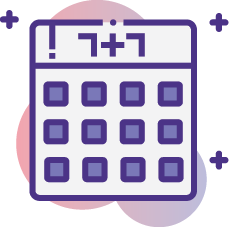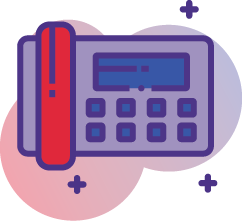How to Write To-Do Lists

Have you ever written a to-do list on Monday, found it again on Friday… and it was still completely intact?
Frustrating, isn’t it? We know that we’re supposed to use a to-do list, but most of us aren’t doing it properly.
Here are some tips to get you on-the-the-right-track with your to-do lists.
First and foremost: You need to have several types of to-do lists. One size (or one list) does not fit all. You need a different type of list for each different purpose.
[ctt template=”3″ link=”wdeag” via=”yes” ]You need several types of to-do lists. One size does NOT fit all.[/ctt]
– Your Master List is a brain dump you can use when you have an idea that you don’t want to forget. Write it down as it occurs to you. I use an electronic Master List, which is just a file on my computer. I add things to that list as they occur to me. Yes, that list is huge, and every once in a while I go into it and cheerfully remove or change things. This is more or less my “wish” list. Stuff I want to do, but I’m not sure when or how it will get done. Occasionally (about once a month) I go through it for ideas and to ensure I’m not forgetting things I want to get done. As things change and some “wishes” become more tangible, I move them to my other lists—where they will actually get done.
– Your Weekly List includes projects and tasks that need to get done this week. You will use this list to create your daily list. My Weekly List is a piece of paper that I create on a Friday afternoon (for the next week) listing all my appointments, flights and meetings, as well as tasks that need to get done the next week. I do include birthdays (just in case Facebook doesn’t remind me), and even personal plans during the week.
– Your Daily List is a Post-it note that you keep on the monitor of your computer. It has no more than five tasks that must get done today. It could be a reminder of a meeting you have at 2:00, or that you need to finish the minutes of the meeting from the previous week. The tasks on this list must get done before you are able to go home, so don’t be unrealistic when creating it. Once those five tasks are done that day, you can turn to your weekly list and start working on things from it. The purpose of the Daily List is to ensure that you are constantly prioritizing as things come your way during the day.
For instance, my Post-it note today said:
- Mom’s birthday – call
- Flight at 2:45 to Chicago
- Call Sid about convention
- Submit Huffington Post article
- Send email to Debbie about yesterday’s event
I always want to be asking myself, “Is this the best use of my time right now?” By keeping the Post-it note on my monitor, I always ensure that I’m doing the best thing at the best time during the day.
[ctt template=”3″ link=”76j6K” via=”yes” ]Always ask yourself: “Is this the best use of my time right now?”[/ctt]
I’m not going to forget any of those five things on my list, but I also don’t want to panic and worry that I might; that would create stress for myself. For instance, I might be on the way to the airport when I realize I didn’t send Debbie an email. I would then create stress, worrying that I might forget to do that when I get to the airport. By keeping that list of five front and centre, I’m not going to forget. I’m going to be more in control, and I’m going to decrease my own stress level.
Once I got the five things from my Daily List completed, I went to my weekly list and found “Write October article,” which I’m currently doing (while on the airplane). That way, it feels like I’m ahead of the game, getting some of next week’s tasks done early. Getting started on my weekly list feels like a bonus!
– Write your lists at the end of the day. Before you go home at night, create your Daily List Post-it. Have your desk ready to go before you leave so you can hit the ground running in the morning. The reality is that many of us will have something happen after hours that may rearrange our priorities. That’s fine (and normal for many of us), because you can edit your list once a new priority appears. If it isn’t as important as the five things you’ve already listed, add it to your Weekly List. It will get done, but you won’t be having “squirrel” moments that distract you.
If you wait until the next morning to create your list, you’ll find yourself responding to everyone’s emergencies in the morning before you even get a chance to think about your own priorities. Yes, you still have to take care of everyone else’s emergencies, but now you can ask yourself, “Is this the best use of my time?” I can look at my Post-it and realize that sending the email to Debbie is more important than responding to the email from Pam. Pam is important, and I will respond to her, but right now, the Debbie task is a better use of my time.
– Keep control of your list. Time management and stress management are closely linked. When one gets out of control, they both do. The secret to both time management and stress management is control. Don’t take on tasks you shouldn’t.
Learn to say no and, when appropriate, delegate the task to the person who should be doing it. For instance, when I sent the email to Debbie about yesterday’s event, I could have very easily included my invoice with the email. But I didn’t. I asked Warren to create the invoice. Technically, it’s his job. I could have created that invoice in a few short minutes, but when I asked myself, “Is this the best use of my time?” the answer was no. The invoice will get done, but getting it done immediately isn’t the most important thing on my list of things to do today. It’s on Warren’s list. Just because I am capable of doing a task doesn’t mean that I should do it. Control your job, and don’t control someone else’s job.
Brian Tracey tells us: “By knowing how to keep control and prioritize your tasks, you can increase your productivity and output by 25 per cent or more from the first day that you begin working consistently from a list.” (Brian Tracy )
– Schedule pieces, not entire projects. I’m sure that every one of us knows the answer to the question, “How do you eat an elephant?” One bite at a time, of course. On my weekly list I may have written “Prepare for X client on October 27,” but there are 12 different things I need to do to prepare for that client. On my daily list, I can write “Book flight for X client” and (at this point) not worry about the other 11 pieces of that task.
According to Brian Tracey, every minute spent in planning saves you 10 minutes in execution. I think that if we have a list and follow it, we are saving substantially more time, and stress as well. If we create and use our Daily List of five tasks, we will save ourselves many hours of frustration just by being disciplined.
You don’t have to write a to-do list to get things done. But if you want to save time, decrease your stress and make sure you get everything you need to do done each day, you should really be using to-do lists effectively.
Article by, Rhonda Scharf









